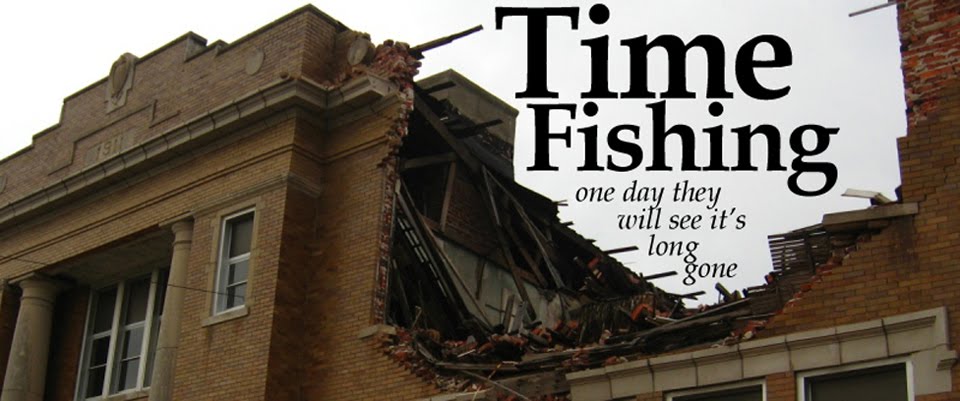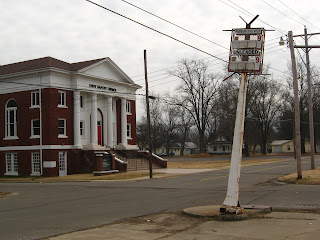Actually, I'm not sure why some of the houses have them and some don't. But I believe this list represents all of the name-plated houses in Searcy. We'll call them the Entitled Seven.

Black House, 1866
Location: East Race, next to Walgreens
Profile: The Black House is Searcy's Art Gallery and one of the oldest homes in town. The last owner of the house before it was turned into a gallery died in the 1980s (at a very old age). Since it's considered one of Searcy's landmarks, the house is kept up very neatly. Unfortunately any environment of historicity around the house has been mostly sapped by development. The ancient and haunted Porter Rodgers house once stood next door, but the family tore it down.

Wilburn House, 1875
Location: E Race, near Midnight Oil
Profile: Most of these houses I don't know anything about except for their names and ages. The Wilburn House is the most forlorn of the Entitled Seven. I have never seen anyone inside or outside. The herringbone brick path fades away before it reaches the sidewalk. A claw of creeper vines choke out the western chimney. But the delicate neoclassical details still stand out under the peeling paint, and the name plate next to the door reminds any curious passerby that the house has relevance to somebody somewhere.

Paschall House, 1877
Location: East Center Street, close to downtown
Profile: This is the stateliest and most austere of the Entitled Seven. When I was shooting this picture, an older black man walked by. "I know that house must have a lot of history," he said. "Look at the five-foot window frames. The old bricks. The stained glass next to the doors." He told me he was from New Orleans and when you live in New Orleans, it doesn't take much to notice if a house has a history. Sadly, neither he nor I knew anything of this house in particular.

Lattimer House, 1895
Location: East Market Avenue, near the Methodist Church
Profile: The rambling Victorian revival style of the Lattimer house makes it the most unusual of our Entitled Seven. The house only looks really good from this angle; the bubbling porches and huge brackets are a little awkward when viewed from other sides. The house is currently home to an abstract company. Fitting considering the nature of the architecture.

Ben Lightle House, 1898
Location: East Market Avenue, across from the Lattimer house.
The Ben Lightle house is one of two of the Entitled Seven associated with the Lightle family, who I believe were influential in Searcy a hundred or so years ago. It's a bizarre house, not quite as odd as the Lattimer house but still gets points for having a second-story door open onto what seems to be a giant telephone booth. My guess is a number of additions have been afforded onto this house since 1898. It must be some sort of guest house or condominium now, since there is a notice on the front door addressed to "All Guest."

Deener House, 1912
Location: East Center Street, near the Paschall house.
Profile: As we ease into the 20th century, we must eventually encounter the Craftsman. I've mentioned this house before, but this picture much better represents it. The Deener house spends most of the year shrouded by the surrounding foliage, but in Spring and Winter, it's one of the largest and most unique bungalows in Searcy.

Lightle House, 1923
Location: East Race Street, across from Sexton.
Profile: The Lightle house, the youngest of the Seven, as a contrast from the Wilburn house (the other of the Seven on Race street) is very well up kept and sits reservedly at the top of an incline. Last I heard, it was home to a Harding professor who has used it as a bed and breakfast. Frankly, I think it as the least remarkable of the Seven. It's very stately but just a little too bland for my tastes.
The main thing I note about the Seven is that they are all within a few blocks of each other: all east of downtown (especially considering there are quite a few old and notable houses west of downtown). But a discussion of the unnamed houses...that's for another time.
-Jonesy



























